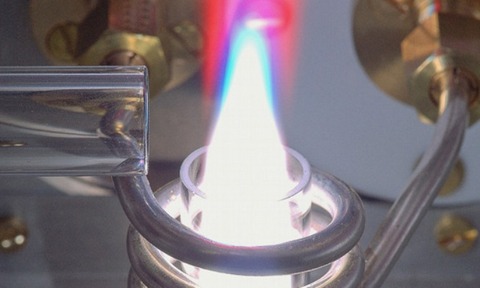
Using electrothermal vaporisation, Spectro has improved the sensitivity of its ARCOS ICP-OES spectrometer.
By using electrothermal vaporisation (ETV) for sample introduction, Spectro claims to have greatly improved the sensitivity of the SPECTRO ARCOS ICP-OES spectrometer for material analysis applications.
Trials verify that detection limits can be improved by an order of magnitude. At a much lower cost, ICP-OES penetrates the sensitivity range of glow discharge sector field mass spectrometers, opening new application areas in solid material analysis for ICP-OES.
Typically, ICP-OES samples are first dissolved and then introduced to the instrument using a nebuliser.
When using ETV, however, the solid samples are vaporized in an oven with a temperature range up to 3,000 degrees Celsius.
The graphite vaporization chamber uses argon as the inert gas. After vaporisation, the analyte is transported as a dry aerosol to the ICP instrument with an argon/reaction gas stream. Sample vaporisation takes just two minutes.
“With ETV, the sample is not diluted, but flows to the instrument as a concentrated stream of micro particles,” explains Olaf Schulz, who is responsible for SPECTRO’s line of ICP-OES products.
“This increases the sensitivity of the ICP instrument significantly. We shifted the sensitivity range of the SPECTRO ARCOS into the range of a few micrograms per kilogram.
“This allows for applications in pure metal analysis with ICP-OES technology possible for the first time.
“A much larger sample amount can be analysed compared with laser ablation, which is better suited to spot testing. Homogeneity differences within a sample also have less of an influence on the analytical result.
“One example is the examination of cathodically obtained copper for electrical wires, where even trace amounts of impurities can greatly impair electrical conductivity. For this reason, material analysis is imperative.”
“Our trials with pure copper indicate that the SPECTRO ARCOS can achieve similar sensitivity as a glow discharge sector field mass spectrometer.”




